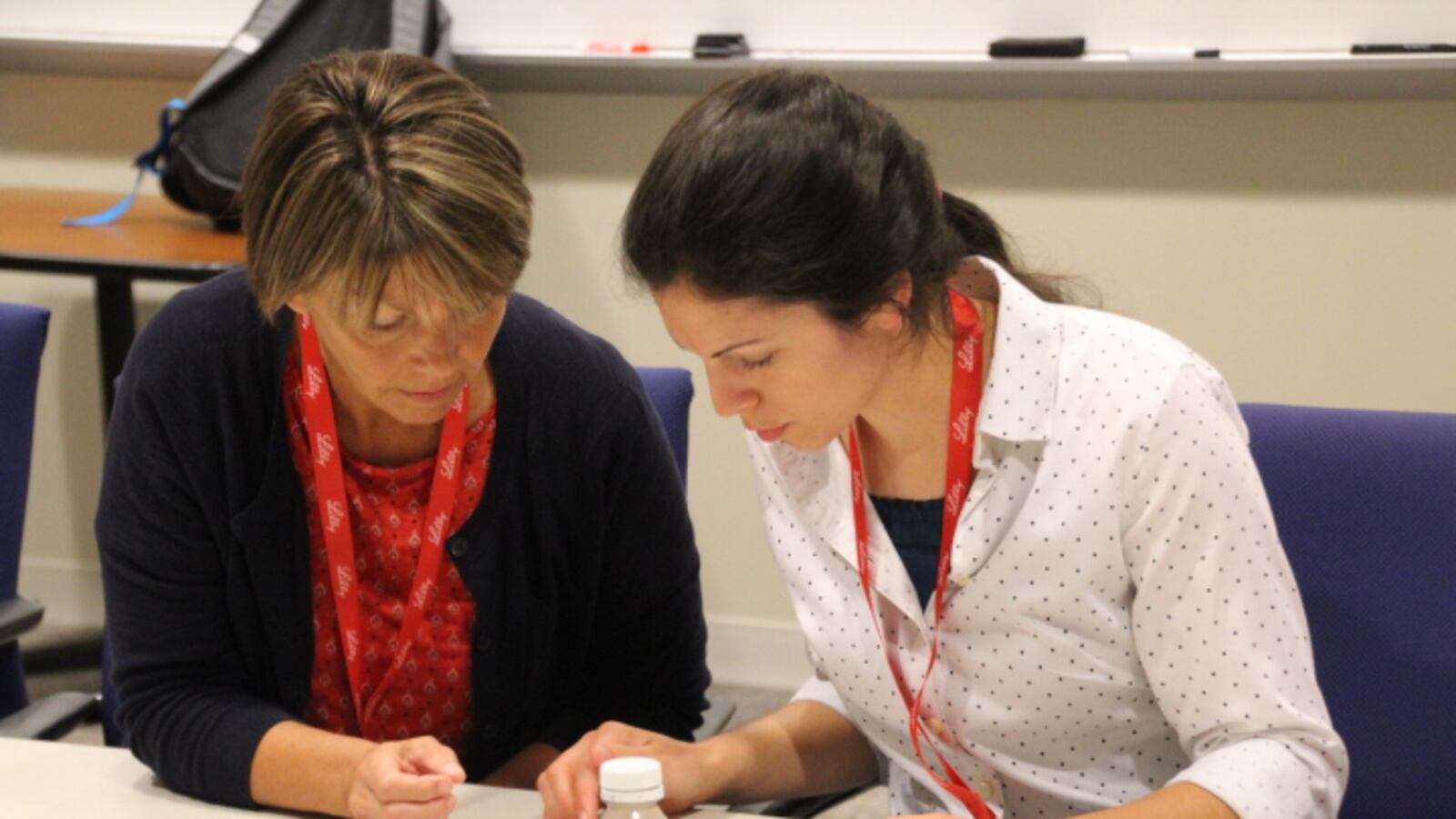In Kraig Kitts’ biology classes, it’s OK to fail.
“That’s science. That’s the nature of it,” said Kitts, a science teacher at Center Grove High School. “Sometimes we don’t know. As teachers, we have a lot of pressures that everything works, every time, 100 percent.”
This is the message Kitts wants to send to his students. It’s also the message he wants to relay to other Indiana teachers.
Kitts is the mastermind behind the Lilly Experience for Teachers in STEM, a two-day workshop for teachers of STEM — or science, technology, engineering, and math — designed to redefine the field by connecting math and science curriculum to real-world applications.
He interned in Eli Lilly and Company’s structural biology department last summer through a special program for science teachers. As an educator, Kitts was shocked to see how his own classroom lessons reflected in the daily jobs of Lilly’s scientists and engineers.
He immediately wanted to share the real-world applications of STEM with other educators — and his students, too
“I think that’s a big one for me is teaching kids that aren’t honors or AP … that they’re just regular kids,” Kitts said.“Giving them the opportunities to apply real-world skills in places where they may not have an interest in STEM before, but they can be like, ‘OK that’s cool.’”
About 75 teachers and 50 Lilly employees from across the state joined Kitts on Tuesday and Wednesday for the inaugural event. They developed STEM lesson plans drawn from real-world examples and received a number of tools and resources to take back to their students.
Albert White, Lilly’s director of operations and chief of staff, said STEM is about more than being the next doctor or engineer — it’s about life skills.
“STEM is about cultivating curiosity for our children,” said White, who helped plan the event. “It’s also about developing critical thinking skills as well as problem-solving. When you look at the different roles throughout, there are opportunities for all children.”
To understand those opportunities, educators toured Lilly’s manufacturing facilities and discovery laboratories, interacting with individuals at all levels of the company.
White said that by sharing the expertise and exposing teachers to the real-world components, he hopes educators can help students escape the mindset that STEM is only about becoming a doctor or engineer.
That’s teacher Heidi Wilkinson’s plan. Wilkinson, who is preparing to transfer from Lighthouse Christian Academy in Bloomington to Northrop High School in Fort Wayne, recently took a group of STEM students to Lilly’s Indianapolis headquarters where they could see their coursework come to life.
“This is what the subject matter looks like in a job,” she said. “All these things that they’re learning, they actually have an application. Sometimes the best stuff you teach them is the stuff that’s not the required curriculum, but it’s the stuff you let them just get curious about.”
Wilkinson’s team created a lesson plan that focuses on critical thinking and working efficiently. Students will be given a mixture of balls that all look the same but have different weights. They must create a process to efficiently separate the balls into different weight classes.
“We’ve seen so much here that when Lilly creates a chemical they want to extract for some medicine, they have to make sure they have the right chemical,” Wilkinson said. “They have to make sure they have the right chemical and be able to separate it and take all the impurities out.”
At the end of the experiment, students will digest how the experiment can be applied to real life.
Wilkinson said she plans to implement the lesson plan in her own classroom to help students gain a vision and understand why they’re doing what they’re doing.
Oftentimes, Wilkinson said students complain about a lesson and ask how it applies to their future. Because educators find themselves on a schedule to meet content standards, it’s difficult for teachers to provide an explicit vision.
“To be able to give them that, whether it be, ‘What does this look like as a career?’ or ‘Hey, this is how it’s applicable,’ or ‘Hey, you can actually ask questions about this’ — that pulls them in,” Wilkinson said.
Both Kitts and Wilkinson agree that STEM education is taking a turn in a new direction. While meeting standards still matters, they want to adjust their focus on the skill sets that come as a result of STEM.
Perseverance and a willingness to learn, for example, are traits employers at Lilly look for, Kitts said.
“Someone asked, ‘What do you look for when you hire somebody?’” Kitts said. “[The chief science officer] said a willingness to learn. That’s the guy that’s at the top of the company.”
And on the floor, Kitts asked an engineer whether he ever feels overwhelmed at his job. The engineer said it was his first job out of college, and while he didn’t know a lot about the job at first, he was able to learn along the way.
“To see that from the top to the guy that’s doing the work, that really is valued is a big one because we want our kids to just be active learners,” Kitts said.
“You don’t have to be the A-plus-plus student in AP Biology. You can be the C-plus student in biology, but as long as you try and you have that willingness to learn and you’re interested in science, you don’t have to go to the top, but you can come out here and work and have a good career.”

